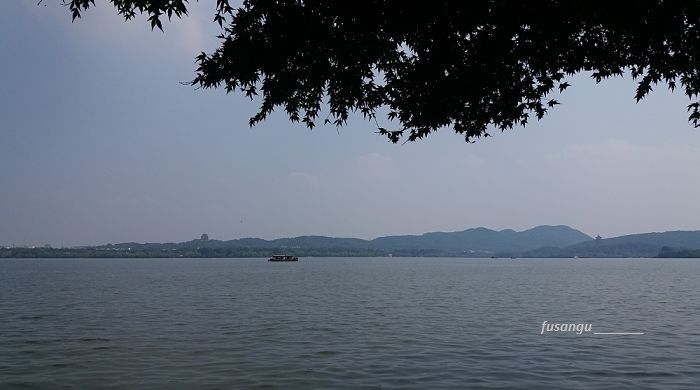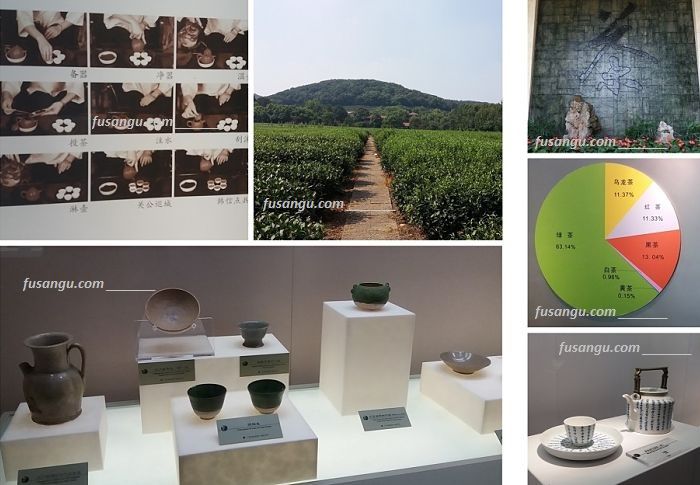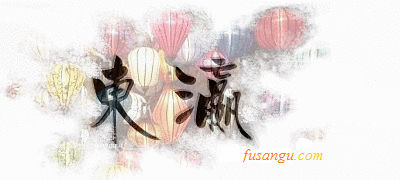Capital of the Province of Zhejiang, Hangzhou is one of the major cities of Eastern China. Highly praised by the illustrious Venetian traveller Marco Polo, owing to the importance of its cultural and natural treasures, Hangzhou is a major travel destination and an absolute priority for the first journey to China.
Together with nearby Suzhou and Shanghai, Hangzhou is a firm priority for any itinerary in East China, especially for the visitor who has a strong interest in the traditional culture of China.
In this page we detail the programme for a two-day visit to Hangzhou. The programme is focused on the area of the West Lake.
The itinerary allows for completely autonomous arrangements. It is possible to reach all sightseeing spots by getting around on foot. Buses link many of the places mentioned and taxis offer a flexible and cheap alternative.

Day 1: West Lake area
The West Lake is one of China’s most important natural and cultural landscapes. Its beauty and harmony have become a paradigm and have been celebrated by countless renowned artists in China and the whole East Asia.
Many cultural and historical sites of outstanding architecture dot the area blending with the natural beauty of the lake. On three sides are hills and mountains. Their background often finds in the delicate shape of a pagoda an element of singularity.
Over many centuries poets and noblemen have identified a great number of poetic scenes. A common tourist path through the area touches upon the so-called Ten West Lake Prospects:
-
Dawn on the Su Causeway in spring: The SuDi is a long causeway that bisects the lake along the north-south direction. It was built under the supervision of Su DongPo, a famous poet of the Song Dynasty Period. Six rock bridges are found along the way. They all have a poetic name. Willow and peach trees create a delicate cover;
-
Winery yard and Lotus Pool in summer: a scenic spot near the north-western corner of the lake, famous for the fragrances and natural beauty;
-
Moon over the peaceful lake in autumn: near the West Outer Lake, the scenic place is marked by the Imperial Stele Pavilion that protrudes into the water body;
-
Lingering snow on the Broken Bridge in winter: at the foot of the Precious Stone Hill, a scenic spot that can be appreciated from the summit of nearby BaoShi Mountain. When covered in snow, due to light reflection and different levels in snow coverage on its span the bridge along Bai Causeway may seem broken;
-
Orioles singing in the willows: at the QingBo Gate, on the site of a large imperial garden. Willows line the dyke and nearby is the Orioles’ House;
-
Viewing fish at the Flower Pond: a large park located south of the Su Causeway comprises five minor scenes. Not to be missed on are the Peony Garden, the Peony Pavilion and the Red Carp Pond. Not far is Villa Jiang;
-
LeiFeng Pagoda in the evening glow: the temple located south of the lake dominates the sunset scene with its elegant shape. Visitors can reach the top of the pagoda and have a commanding view of the lake;
-
Twin Peaks piercing the clouds: two small mountains face each other at the north-western corner of the lake. The scene is most beautiful when their summits emerge from a sea of clouds or a blanket of mist. In ancient times the peaks housed small temples;
-
Evening bell ringing at NanPingShan: the small hill located above JingCi Temple is called NanPingShan. Bells ringing at dawn and drums resonating at sunset made for a spectacular scene;
-
Three pools mirroring the Moon: south of the Lesser Paradise Island, one of the small group of artificial islands built in the middle of the West Lake, are three small stone towers arranged in a triangular layout. Their cave section is lit during full moon, which creates the impression of multiple reflections of the Moon on the surface of the lake.
The area is quite large but you can cover much of it on a full day visit. You should both walk along the perimeter and the causeways that cross the lake. In order to visit the small islands you need to join a tour.
Day 2: LingYin Temple, China National Tea Museum, LongJing Hills
At 7:00 o’ clock, when crowds are not to be feared, you can start your visit to LingYinSi, one of China’s most beautiful and historically significant temples.
LingYinSi (灵隐寺 | Temple of the Soul’s Retreat) was built by the Indian monk HuiLi during the Jin Dynasty Period. The monk was inspired by the spiritual nature of the beautiful valley, sheltered by a thick forest of tall trees and surrounded by mountains on three sides, in a peaceful atmosphere of seclusion.
The temple grew into one of the most influential centres of irradiation of Buddhism in China. At the peak of its development, it comprised tens of buildings and a large monastery providing accommodation to over 3.000 monks.
Despite repeated losses and destruction, it has always been restored and enjoyed support at the highest levels, even during the infamous period of the Cultural Revolution.
Among the highlights not to be missed on are the Laughing Buddha, the central statue of the triad housed in the Hall of Heavenly Kings, the Sakyamuni sitting on a Lotus flower, a huge statue housed in the Hall of the Great Hero, the main hall of the complex, the Hall of the 500 Arhats, a recently added building built in the shape of a swastika at the centre of which stands a magnificent pavilion in bronze.
Nearby is an atmospheric housing vestiges of the past, an exciting environment that testifies of the profound devotion that has always surrounded the temple. Most famous is the Peak Flown From Afar (飞狼风, FeiLangFeng), a small hill whose shape and consistence are in contrast with the surrounding formations and that was deemed to have originated in India. A great number of old statues can be seen in the caves and cliffs that shape the unique environment.
The complex is quite large and walking around is a pleasant experience amid Nature. You can then dine at the vegetarian restaurant located inside the temple (near the entrance).
Not far from LingYinSi are the LongJing Hills. They offer beautiful sights of the Chinese countryside, a landscape that is somewhat at odds with the modern city, a respite for the spirit and a scenery famous for the renowned green tea plantations.
In this area is China National Tea Museum, which probably is the world’s largest and most comprehensive museum entirely devoted to the culture of tea. Housed in two groups of halls, not deprived of architectural value, the exhibitions help the visitor learn about the different tea varieties, the historical development of production and consumption methods and customs, the societal and cultural changes tea brought about, the evolution of tea ceremony in China and neighbouring countries and much more. There is also a very good souvenir shop.

How to get to Hangzhou
Hangzhou is served both by the conventional and the high-speed railway networks. The city can easily be reached by major cities such as Beijing, Shanghai, Xi’An, Wuhan, Guangzhou and Shenzhen.
Train services are very frequent and relatively cheap. High-speed trains offer the most comfortable travel solution. Those who plan to reach Hangzhou from distant regions might want to consider flying or travelling by train during the night.
Hangzhou airport is served by an increasing number of international routes.
Where to stay in Hangzhou
The city centre is the best place to stay at if you want to be close to restaurants, shops and major transportation hubs. A large number of hotels is located along the eastern shore of the West Lake.
Near the eastern shore of the lake, in more secluded places, are some luxury hotels and a few guest-houses and cheap hostels.
At the north-western corner of the lake is the State Guest House. Set in one of the most scenic areas of the city, it has long served as the accommodation for notable foreign guests.
Related articles:
China suggested 2-week itinerary
Nearby destinations:
Suzhou 1-day itinerary | Suzhou 2-day itinerary

